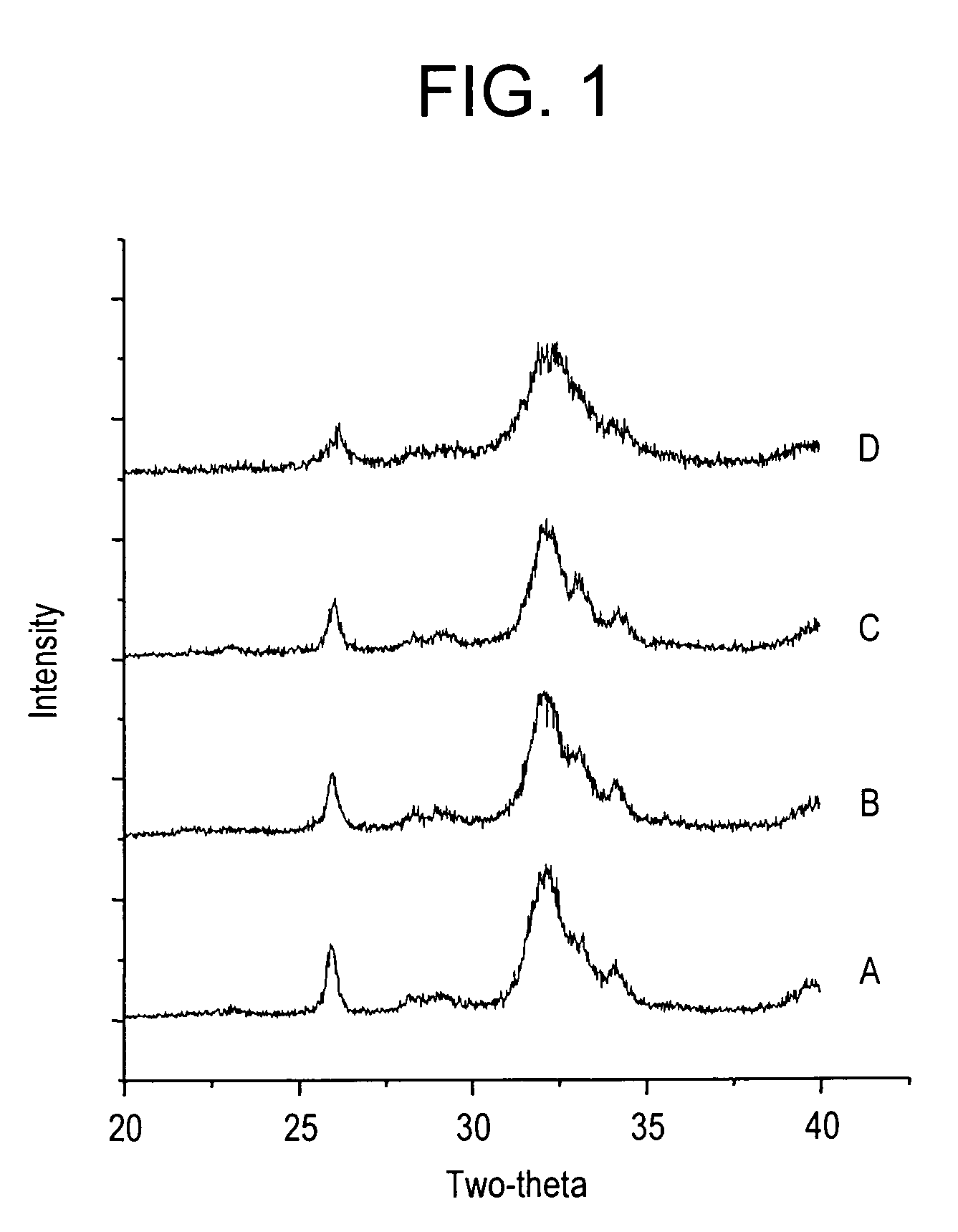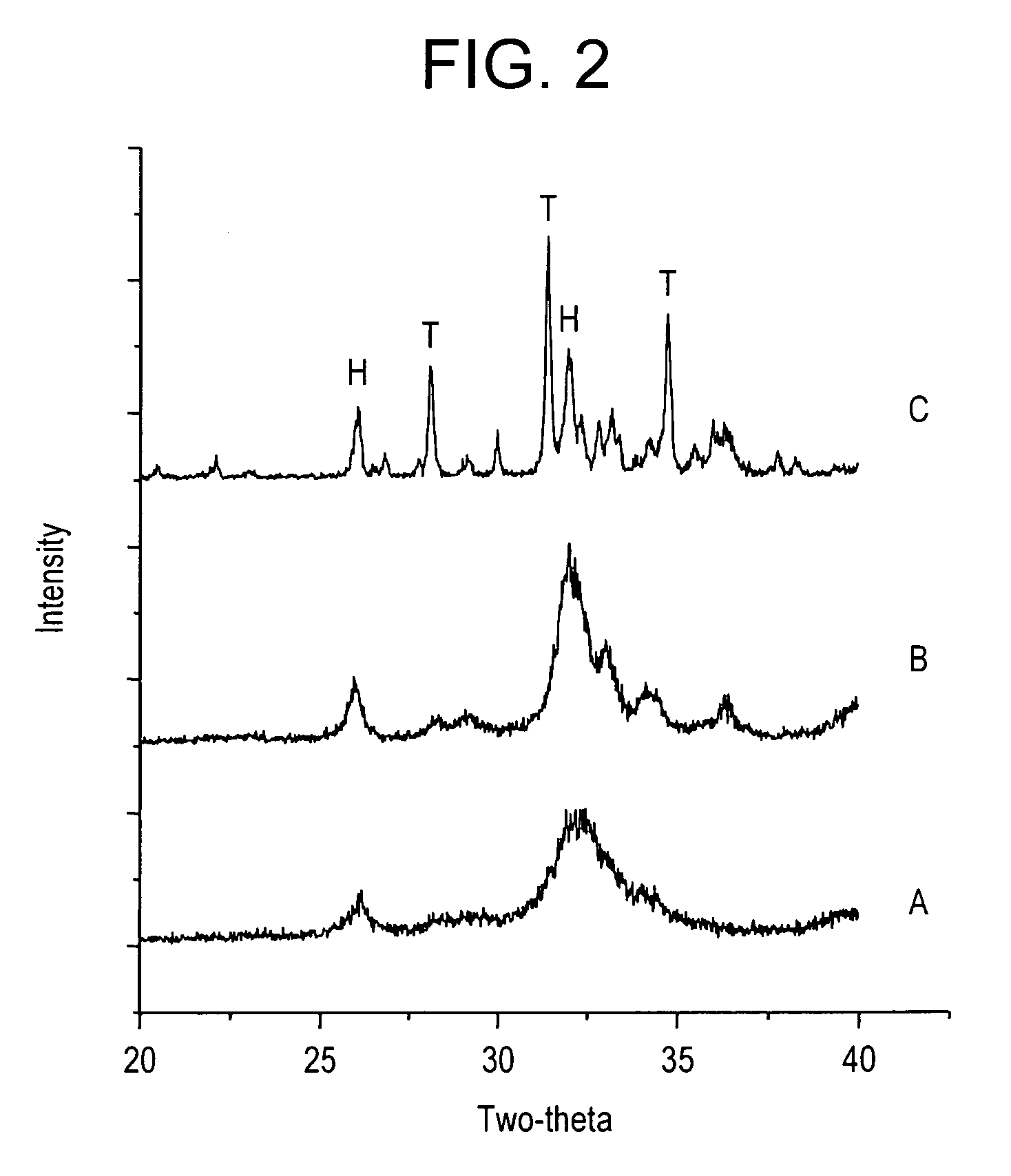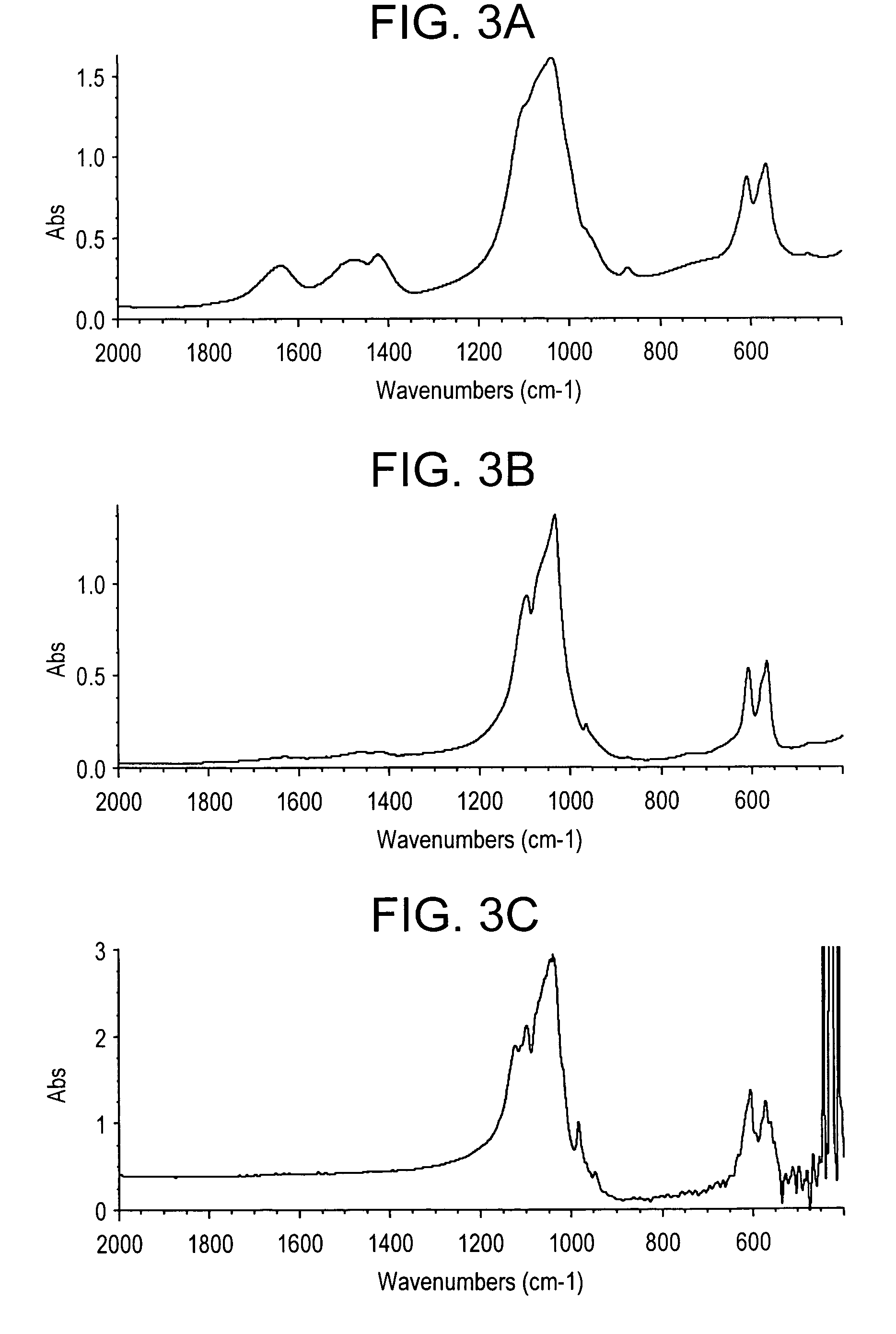Calcium phosphate-based materials containing zinc, magnesium, fluoride and carbonate
a calcium phosphate and fluoride technology, applied in the direction of prosthesis, impression caps, other chemical processes, etc., can solve the problems of reducing the formation of cancellous bone, thinning of cortical bone, bone loss, etc., to promote bone formation, reduce or prevent bone resorption, and slow release of mg
- Summary
- Abstract
- Description
- Claims
- Application Information
AI Technical Summary
Benefits of technology
Problems solved by technology
Method used
Image
Examples
examples
Cell Response to Mg / Zn / F-BCP Materials
[0043]Unsintered materials used for the below were: carbonatehydroxyapatite (CHA), Mg-containing CHA (Mg / CHA), Zn-containing CHA (Zn / CHA); F-containing CHA (CFA); Mg-, Zn- and F-containing CHA with Mg- and Zn-containing β-TCP (Mg / Zn / F—BCP). The purpose of this study is to determine the cell response to these materials.
[0044](a) Effect on proliferative capacity: The effect on proliferative capacity of human osteoblast-like cells was studied by incubating human MG-63 (105cells / well / ml) in the presence or absence of materials at 37° C., 5% CO2 for 5 days. The cells were radiolabeled with 1 mCi of 3H-thymidine and the proliferation rate was determined by scintillation counting of TCA precipitable DNA. The materials significantly increased the proliferative capacity of osteoblast-like cells. Higher proliferative effect compared to control in cells exposed to the synthetic materials was observed.
[0045](b) Effect on phenotype expression and growth mark...
PUM
| Property | Measurement | Unit |
|---|---|---|
| wt % | aaaaa | aaaaa |
| wt % | aaaaa | aaaaa |
| pH | aaaaa | aaaaa |
Abstract
Description
Claims
Application Information
 Login to View More
Login to View More - R&D
- Intellectual Property
- Life Sciences
- Materials
- Tech Scout
- Unparalleled Data Quality
- Higher Quality Content
- 60% Fewer Hallucinations
Browse by: Latest US Patents, China's latest patents, Technical Efficacy Thesaurus, Application Domain, Technology Topic, Popular Technical Reports.
© 2025 PatSnap. All rights reserved.Legal|Privacy policy|Modern Slavery Act Transparency Statement|Sitemap|About US| Contact US: help@patsnap.com



